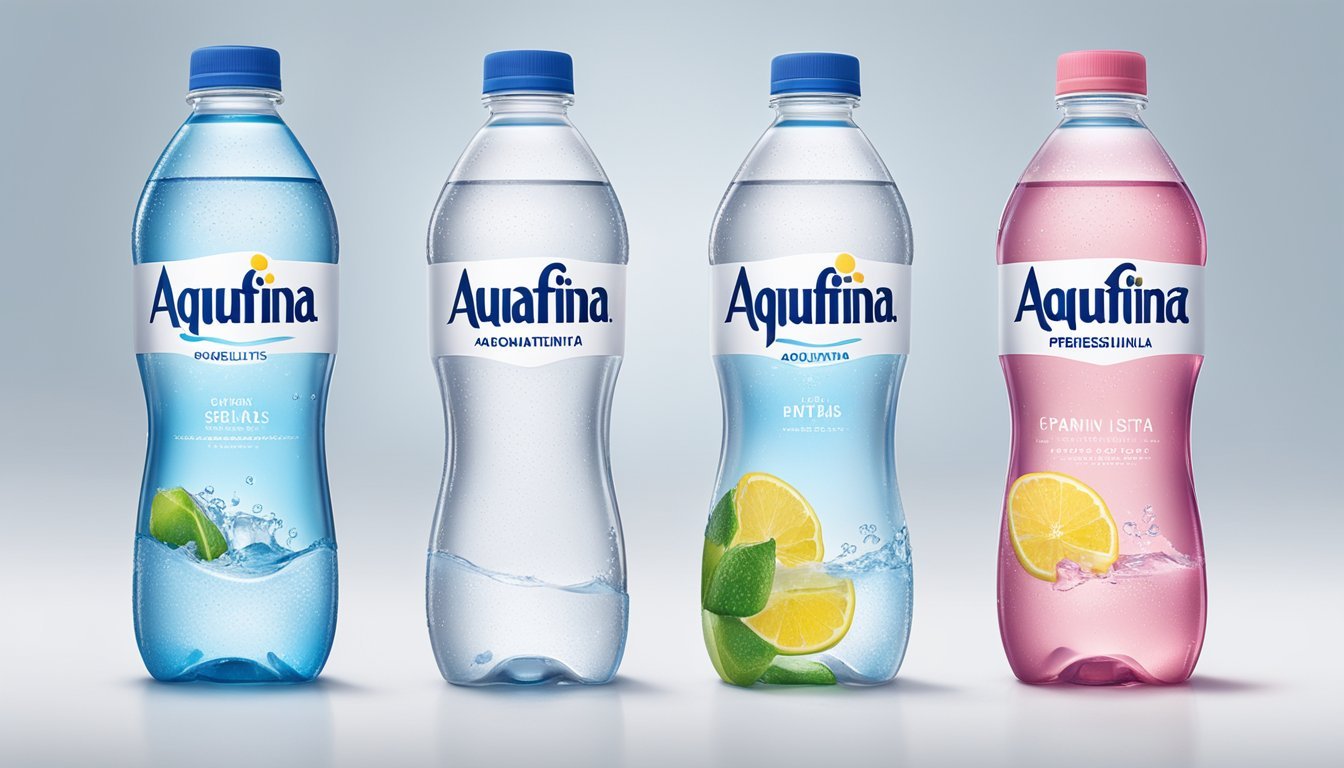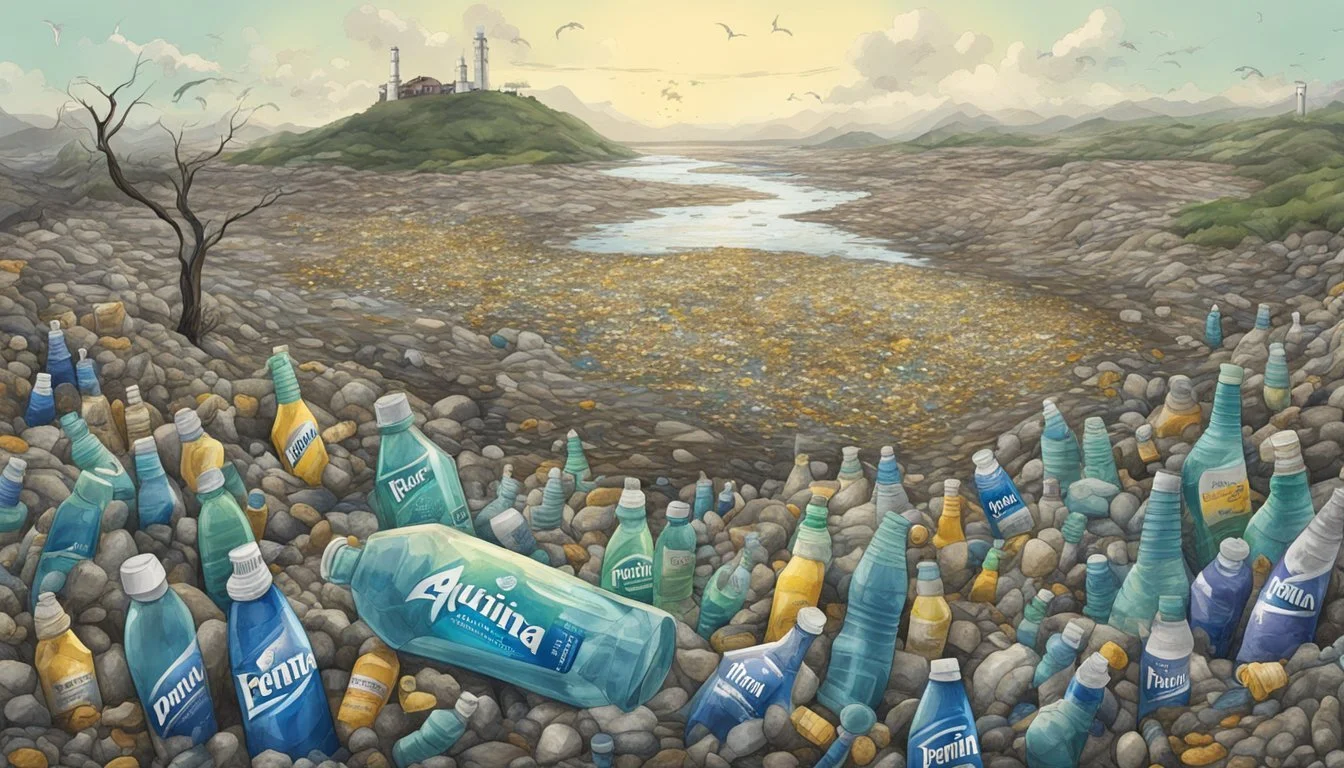Aquafina vs. Penta
A Comparative Analysis of Bottled Water Quality
Choosing the right bottled water can be more complex than one might think. With various brands on the market, each claiming purity and taste superiority, consumers often find themselves weighing options. Two prominent contenders in the world of bottled water are Aquafina and Penta. Both are known for undergoing rigorous purification processes, but they adopt distinct approaches to achieve their version of pure, clean water.
Aquafina originates from local municipality sources and is treated with a purification process trademarked as HydRO-7. This proprietary method includes reverse osmosis, ultraviolet light, and ozone sterilization to eliminate impurities and contaminants. The result is a product that aims to deliver consistency in purity and taste across its distribution regions.
Penta, on the other hand, prides itself on its high-energy, patented 13-step purification process. This intense procedure includes additional steps such as deionization and over 100 hours of filtration, with the goal of producing water with ultra-high purity. Despite its more involved production technique, what ultimately matters to consumers is how these processes affect the water's quality and taste, which are key factors in determining which bottled water is superior.
Understanding Bottled Water
Bottled water has become a staple in consumer choices for hydration, especially when concerns about the purity and taste of tap water arise. This section will explore the intricacies of bottled water, from its history to the regulatory frameworks that ensure its quality.
History and Evolution of Bottled Waters
The concept of bottled water is not new; it has been around for centuries. Initially, people consumed spring water directly from natural sources, valuing its mineral content and supposed medicinal properties. With industrialization, the bottling of this water began, making it accessible beyond its geographical source. Over the years, bottled water has evolved from a luxury item to a widely available commodity.
Types of Bottled Water
Bottled waters come in various types, each defined by its origin or treatment process:
Spring Water: Collected from a natural spring, this water must flow to the surface on its own accord.
Purified Water: This category includes water from any source that has been treated to remove impurities. Brands like Aquafina employ methods such as reverse osmosis and ultraviolet light sterilization.
Mineral Water: Sourced from a mineral spring, this type of water contains various minerals like salts and sulfur compounds.
Electrolytes: Some bottled waters are enhanced with electrolytes for taste and to replenish minerals lost during exercise.
Regulations and Quality Standards
Bottled water companies must adhere to stringent regulations to ensure safety and quality:
FDA Regulations: In the United States, the Food and Drug Administration (FDA) sets standards for bottled water quality, labeling, and safety.
EPA Standards: Tap water is regulated by the Environmental Protection Agency (EPA) and must meet certain quality standards, but bottled water is held to different criteria set by the FDA.
Third-party Certifications: Many companies seek additional certification from independent bodies to assure consumers of their water's quality.
Bottled water brands vary in their source and treatment methods, with brands like Aquafina using purification processes and Penta boasting ultra-purified options. Consumers often choose based on taste, quality, and the presence of minerals and electrolytes.
Brand Profiles
In the competitive market of bottled water, both Aquafina and Penta stand out for their purification processes, yet they hail from very different origins.
Aquafina Overview
Aquafina is produced by PepsiCo, one of the largest beverage companies globally. The brand offers purified water that undergoes a rigorous purification process. This includes reverse osmosis, ozone oxidation, and other filtration methods, part of their proprietary Hydro-7™ purification system, which is designed to remove substances other than water molecules. The result is a clean, pure taste that has helped Aquafina become a well-recognized name on the shelf.
Penta Overview
Penta, on the other hand, is less about the brand’s corporate lineage and more about the technology behind its product. Penta water is characterized by its use of a patented 13-step process that includes ultraviolet light and ozone for purification, ensuring the removal of impurities and contaminants. Unlike Aquafina, Penta prides itself on providing not just purified but ultra-purified water, emphasizing its commitment to a distinctive level of clarity and purity in its product.
Comparison by Properties
In this section, we compare Aquafina and Penta bottled water based on their taste profiles, pH levels and mineral content, and purification processes to provide a succinct analysis of their properties.
Taste Profiles
Aquafina and Penta have distinct taste profiles attributed to their purification techniques. Aquafina is known for a clean, crisp taste due to its HydRO-7 purification process, which includes steps such as reverse osmosis and ultraviolet light sterilization. In contrast, Penta's taste is often described as pure and fresh, a result of its vapor-distillation process and the infusion of oxygen.
pH Levels and Mineral Content
The pH level and mineral content of water can greatly affect its taste and health benefits. Aquafina, while purified, has a pH level that is typically neutral, around 7.0, with minerals added for taste after the purification process. Penta water claims a higher pH level, usually above 7.0, and boasts a mineral content that includes electrolytes, although specifics on mineral levels are not detailed publicly.
Purification Process
The purification processes of Aquafina and Penta are rigorous and designed to remove impurities:
Aquafina: Employs a seven-step purification system called HydRO-7 which includes:
Carbon filtering
Reverse osmosis
Ultraviolet light
Ozone sterilization
Penta: Utilizes a 13-step, 11-hour process that includes:
Vapor-distillation
Infusion with oxygen
This comparison reveals that both brands focus on producing purified water, but they use different methods that contribute to their unique taste profiles and potential health benefits.
Health and Hydration
When comparing bottled water brands like Aquafina and Penta, it's essential to consider their effectiveness in hydration as well as any potential health benefits or concerns that may accompany their consumption.
Hydration Efficiency
Aquafina prides itself on a purification process known as HydRO-7. This involves seven steps, including reverse osmosis and ultraviolet light, to efficiently hydrate the body while removing unwanted contaminants from tap water sources.
Penta, on the other hand, does not detail its process as clearly but implies a high standard of purification to ensure optimal hydration. Both brands strive to offer a product that aids in effective body hydration, which is a fundamental aspect of health and wellness.
Health Benefits and Concerns
Aquafina:
Benefits: Assures purification that removes most known contaminants.
Concerns: Originates from municipal sources and may require rigorous processing to eliminate potential impurities.
Penta:
Benefits: Undergoes a significant purification process, likely aiming to reduce contaminants and deliver healthful hydration.
Concerns: Specific information on the process isn't as transparent, making it harder to evaluate.
Both brands generally provide water that is free from BPA due to the plastic bottling processes they employ; BPA is a chemical traditionally associated with health risks and commonly found in various plastics. When consumed, both Aquafina and Penta should offer pure water free of unwelcome contaminants, elevating their health benefits over standard tap water for individuals seeking a clean and convenient hydration source.
Environmental Impact
When examining the environmental impact of bottled water brands such as Aquafina and Penta, it is critical to assess the sustainability of the sources and the effects of packaging and recycling practices.
Source Water Sustainability
Aquafina, a brand owned by PepsiCo, typically sources its water from municipal supplies which is then filtered through a multi-step purification process. The process involves reverse osmosis and ultraviolet light treatments, among others, to ensure the purity of the water. While Aquafina's water purification process is advanced, the sustainability of using municipal water can be questioned due to the energy consumption and potential strain on local water resources.
Penta, however, prides itself on providing ultra-purified water. Although specific sources aren't explicitly mentioned in the available data, water brands that emphasize purification often rely on groundwater or spring water as their starting point. The sustainability of spring water and groundwater sources can vary widely and is dependent upon the rate of extraction compared to the rate of natural replenishment.
Packaging and Recycling
Both brands utilize plastic bottles for packaging their product. Aquafina's bottles are made with non-BPA plastics and are recyclable, but even with recycling efforts, plastic water bottles can contribute to environmental pollution due to low recycling rates and the potential for plastic waste to end up in landfills or oceans.
Penta, like many bottled water companies, faces the challenge of providing environmentally friendly packaging. Despite the use of recyclable materials, the impact of plastic production and disposal remains a concern.
Package Materials: Both brands are increasingly looking to reduce the impact of packaging by using lighter-weight plastics and exploring alternative materials like boxed water containers, which boast a better environmental footprint.
Recycling: Proper recycling can mitigate environmental damage, yet recycling rates for plastic bottles are not optimal. Efforts to improve collection and processing of these bottles continue to be important for both brands.
In summation, the environmental impact of bottled water—be it from Aquafina or Penta—is multifaceted, involving considerations from source sustainability to the materials and lifecycle of packaging.
Consumer Information
In assessing bottled waters, consumers often consider both the price and availability of products. These aspects can greatly influence purchasing decisions.
Price Comparison
Aquafina and Penta water brands differ in price, often due to their purification processes and branding. Aquafina, a product of PepsiCo, typically uses a purification process called HydRO-7, which includes reverse osmosis, ultraviolet light, and ozone sterilization. On the other hand, Penta is an ultra-purified water, boasting a 13-step purification process. Here's how they compare in price:
Brand Average Price per 500ml bottle Aquafina $1.00 - $1.50 Penta $1.50 - $2.50
The prices listed are general and may vary depending on the retailer or location.
Availability and Accessibility
Aquafina is widely available and can be found in many retail outlets, including grocery stores, convenience stores, and vending machines. It benefits from the extensive distribution network of PepsiCo, making it a convenient choice for consumers.
Penta water may not be as widespread in physical stores, but it is accessible through online retailers. Consumers looking for Penta may have to specifically seek it out, as it might not be present in all local supermarkets or convenience stores.





